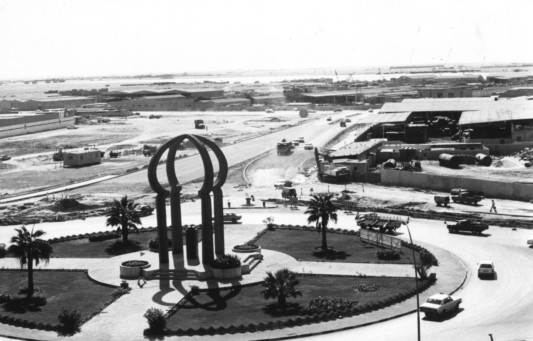
In early 2009, a new book was published in the United Arab Emirates. Having seen an advertisement about the book in the newspapers, I bought it due to my habit of reading everything written about the UAE, even material that is not that significant, including this new book Pearls of Dubai: Indo-Arab Relations (1900—1959), by Deepak Vijay Bhatia, which was published in English.
There should have been an Arabic version of this book, since it does not flow consistently unlike other themed books. The book addresses the history of Indians in the UAE, especially Dubai. It presents the opinions of people that the author has met or communicated with.
Most of them are Emiratis, particularly Dubai residents. Therefore, I think an Arabic translation would be useful. However, this is not a must-have.
Many respondents who wrote to the author or expressed their opinions were not local merchants who dealt with merchants. Their knowledge about the role of merchants in the early and late 20th century was limited.
Even the Indian respondents were young people who have little experience and knowledge about their early ancestors who were depicted in the book. The people in the pictures are known to veteran Emirati merchants, who saw and lived with the ancient banyans, a word used to refer to Hindus.
I think the book is not of much significance, though it makes some meaningful points. It is subjective and does not satisfy the reader’s appetite for information. It features some local people whose main motive might have been to give a false claim of knowledge, which may be far from realistic except for the two introductions written by shaikhs introducing the book to the readers. The other respondents were subjective; they talked about themselves and their families more than about the subject matter of the book.
The book is limited to Hindu merchants or gaur as they were called by Emiratis and Omanis long ago.
It does not refer to Muslim Indians who, even though there were fewer of them than the Banyans, traded with the Arab community in the Emirates and integrated into this community, as they had the same faith as the natives.
Inaccuracies
The book should refer to the Bohra, an Indian community that has made great contributions in trade (the focus period of the book) since the early 1950s.
Pearls of Dubai gives the family tree of the Dubai ruling house incorrectly. It includes inaccurate historic incidents from less knowledgeable sources. Unfortunately, this is typical of foreign authors, who often depend only on the people they know without uncovering the real sources of information.
The promotions are misleading about the contents of the book. It does not have rare photos. In fact, most of the photos have been published previously and none of them are rare.
Certainly, the Indian merchants named in the book have made contributions to trade since the early half of the 20th century. They have lived peacefully and had never caused any harm to this country or its people.
However, their contributions have not been that meaningful to the public in any useful area such as culture, education or health. I believe that someone should be remembered and praised only if they had a role in serving the nation or its people.
—Abdul Ghaffar Hussain is a prominent writer and public intellectual.








